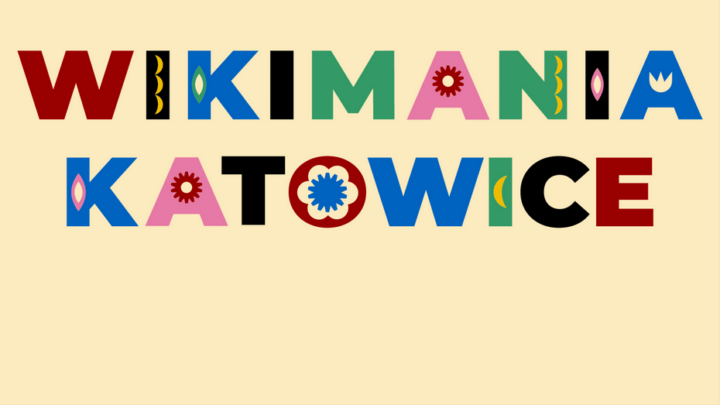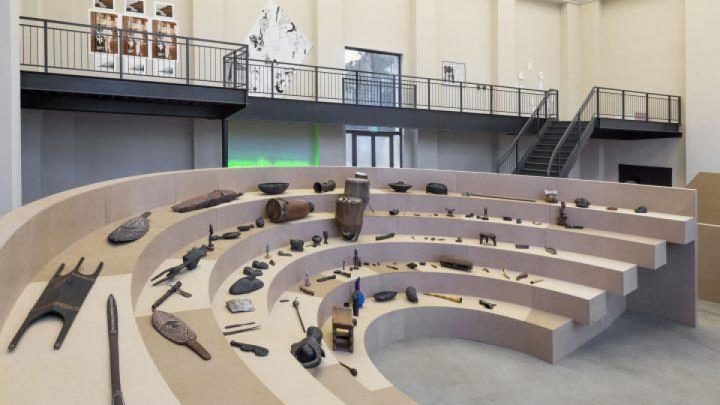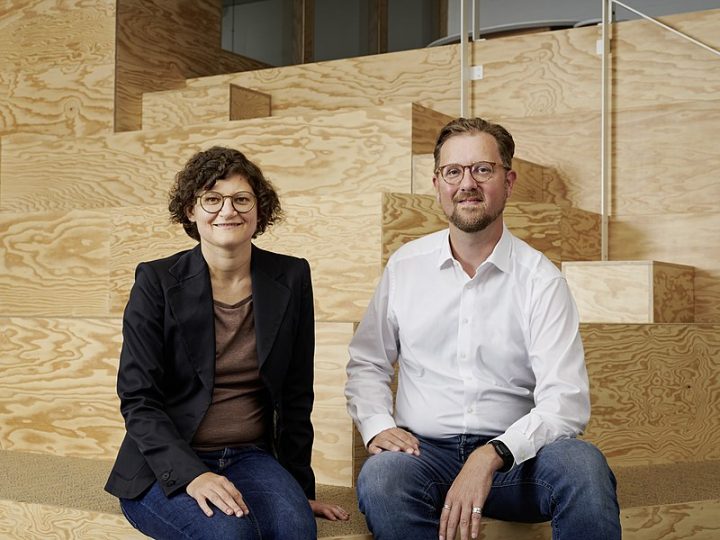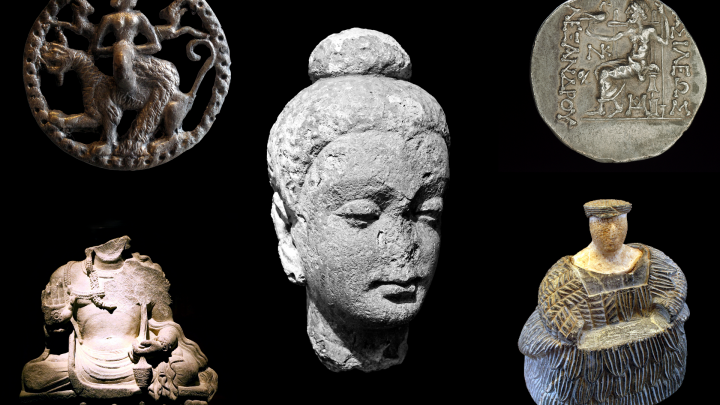Open and Equitable – Questions on how to handle digital copies in collections from colonial contexts (Part III)
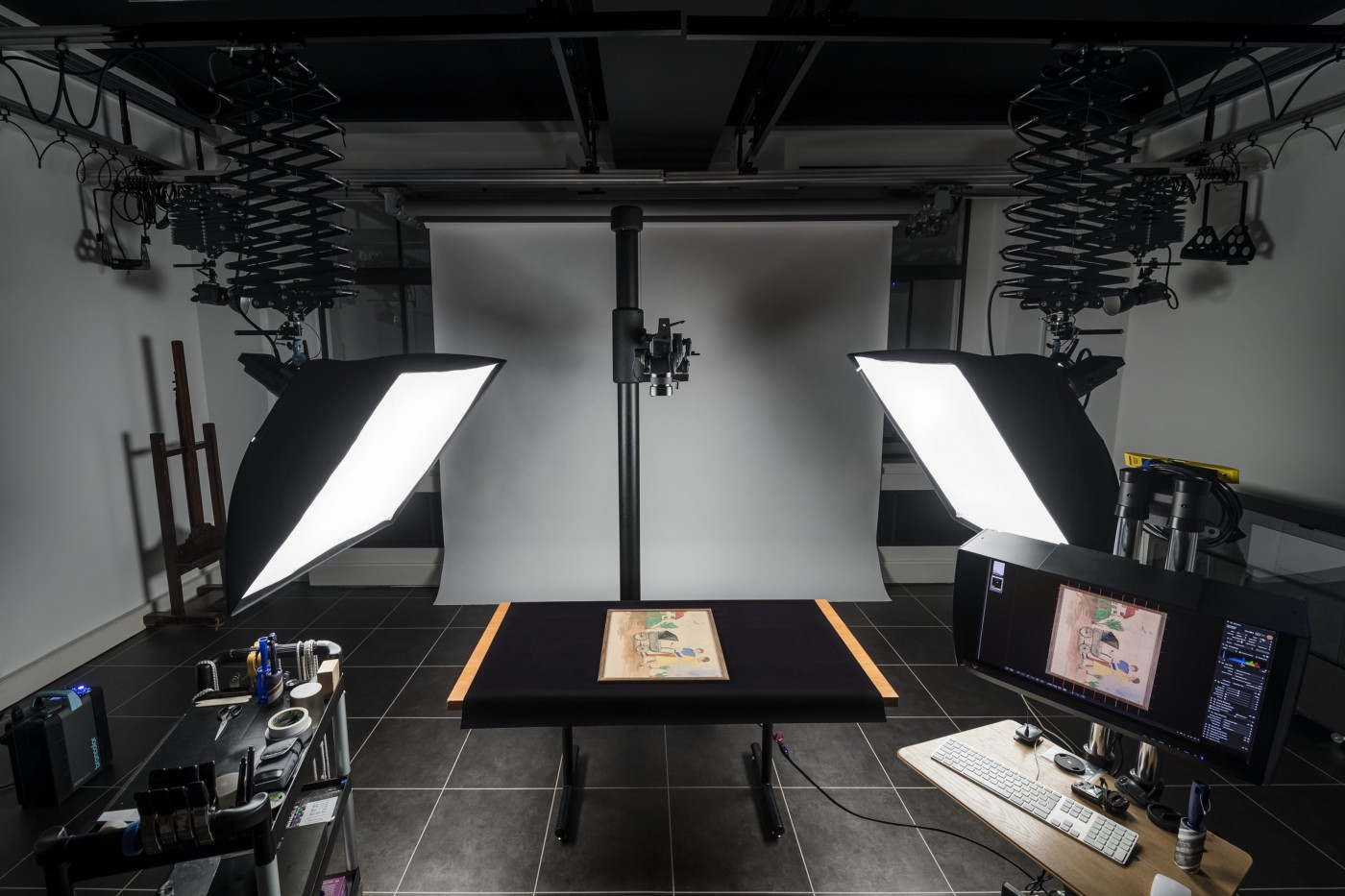
Andrea Wallace
18. May 2022
Andrea Wallace is Senior Lecturer in Law at the University of Exeter, a member of the Centre for Science, Culture and the Law at Exeter (SCuLE) and co-director of the GLAM-E Lab (Law School and Digital Humanities) established in partnership with the Engelberg Centre on Innovation Law and Policy at NYU Law School.
Her research focuses on intersections of art and cultural heritage law with the digital realm and digital heritage management. Amongst a myriad of works and projects, she frequently writes and presents on open culture and the impact that a claim to copyright in reproductions has on meaningful access to cultural heritage in the public domain.
In the WMDE blog series addressing the role of digitisation in how institutions might deal with collections from colonial context, Andrea Wallace tells us more about the tricky legal status of digital surrogates of these collections.
The title of our series is “Open and Equitable”. In preparing for this interview you mentioned that some time after joining the open access movement you’d begun to question the ethics of the drive to open everything. Could you expand a little on that? Where do you see the tensions?
I might not frame it as the ethics of the drive to open everything, but more about the systems and values that shape those decision making processes, who is included and the speed at which those decisions are being made.
“Open” has a sense of fundamental fairness built into it. For so long, open movements have had to advocate that open is an ethical decision. Part of this includes confronting how current aspects of the copyright system may not be the best way to balance creators’ rights with access and knowledge progression. Within the heritage sector, these efforts extend to educating others that a new copyright may not arise in certain digital materials produced during the reproduction and management of collections, while also advocating that these materials should be published and marked as copyright-free for the public to reuse. These shifts toward openness have required huge rethinkings around copyright, collections management and public missions in a digital era. And a number of cultural institutions have been pivotal in leading the way toward these necessary rethinkings.
In fact, my entry into “open” occurred in 2015 while I was researching how cultural institutions digitised and made their public domain collections available for public reuse. I was surprised to learn that only a tiny minority of heritage institutions published the digital surrogates of their public domain works to the public domain. Most made new copyright or contractual claims that restricted access to the digital surrogate, the physical item and information it contained. I wanted to understand how difficult that path to “open” could be, so I organised a research-led exhibition that explored the legal, financial and technological aspects of open access to public domain collections. And I saw so many exciting examples of what was possible when digital collections were available for reuse. Since then, the open GLAM (Galleries, Libraries, Archives and Museums) movement has made massive strides. We’re now in a moment where cultural institutions are increasingly signing on to the idea that public domain materials should remain in the public domain after digitization. As of today, more than 1,400 cultural institutions in 54 countries have now published more than 85 million digital assets at various resolutions and metadata quality for any reuse whatsoever. That’s an incredible amount of data.
But in this push for “open,” which still requires convincing, we’re seeing that more attention must be paid to heritage materials prior to publication, or even digitization, especially if the goal is to release materials for unfettered reuse. Some data has racist legacies and contains harmful information; what happens when it’s made machine actionable and integrated into datasets for machine learning and artificial intelligence? There are clear examples of sacred items or ancestral remains that are inappropriate for digitization, let alone for online publication (despite whether they are marked as “in-copyright” or “public domain”). We also know that the overwhelming majority of digital collections are published by heritage institutions with larger purses located in the Global North. While this can improve access for global users who identify with the heritage, we also know the digital divide filters who is able to engage and shape the knowledge around it. These and other aspects of open movements are where tensions can come through. How can we make “open” more equitable and users better informed about what isn’t in collections? Who should be making certain decisions around digitization, publication, rights and reuse? What information should accompany the data online to account for existing inequities in representation, knowledge and access? And whose histories and/or politics have informed our understandings of copyright, the public domain and a common cultural heritage?
You have worked in various projects concerning surrogate intellectual property rights. You now focus on legal questions around digital surrogates of objects from colonial contexts and, together with your colleague Mathilde Pavis, published a response to the Sarr-Savoy Report on digitization of African Cultural Heritage submitted to the French government in 2019. Could you outline what are the most pressing matters that need to be addressed in this context?
Along with everyone else, we pored over the report when it was published and have been energised by the monumental shifts that followed. We also saw a need to expand the wider restitution discussion, which has focused primarily on physical cultural heritage, to achieve the report’s goals around epistemic justice and a new relational ethics.
We felt it was important to highlight that the associated materials, digital media and intellectual property rights must be part of the restitution process while also revisiting the role open access can play. On pages 66-67, the report recommends, among other things, the “systematic digitization” of materials for an open access platform, along with the free use of images and documents. On its face, this sounds fantastic and is in line with open access goals. However, there are both issues and opportunities raised by this strategy that need further attention. Because France seemed poised to enact restitution legislation, we wrote to encourage the Ministry of Culture to include in its scope any associated materials and digital cultural heritage alongside the legal reform necessary for digital and intellectual property restitution. More than 100 legal and heritage scholars and practitioners signed on to the response.
In short, we argued that digitization is not a neutral act, and instead is a cultural and curatorial prerogative that should belong to the communities of origin. A lot of digitization has occurred, and will continue to occur, in France. The new rights arising in the digital media will restrict access and reuse of that heritage for decades to come. This is because where digitization physically occurs determines whether rights arise, which rights, in what materials, and for whom. If digitization occurs in France, French law controls these outputs and any property rights, copyright, moral rights, database rights, and so on. And while open access obligations may appear to provide an answer, we argued they also need closer attention. By waiving or releasing rights, the digital media becomes part of the public domain, where anyone can reuse it for whatever purpose. But there may be valid reasons to recognise systems of exclusion to guard against further exploitation and extractive processes, especially with sensitive materials. In any case, open access is a component of a binary copyright/public domain system, and such obligations are not imposed on France’s own cultural institutions and digital collections. Instead, decisions around digitization, rights and open access also belong to communities of origin.
There’s a lot to think about with respect to a physical item and restitution, let alone all of the intellectual property, associated materials, and digital media that has been produced around it over the period of dispossession. But those materials are just as important. If readers are interested, they can read the response or listen to a podcast in which we discuss it further, here.
The previous blog post in this series highlighted the perspective of Kenyan museum professional, Juma Ondeng, and the International Inventories Programme in trying to obtain data on Kenyan artefacts in European and North American museums. What is (or maybe should be?) a country of origin’s legal claim over such digital surrogates?
In terms of a legal claim, I’m not sure there is or may ever be one. And, of course, that’s central to the issue. We have dominant legal systems that have been spread over centuries through colonisation, bilateral and multilateral treaties, and international legal measures which have formalised power imbalances and imposed certain obligations on the countries that join them. Existing systems treat these materials separately; they also determine who can be legally recognized as a claimant, and to what materials; what types of evidence are sufficient for establishing a connection or “ownership”, and what that means; and disputes are typically adjudicated in the jurisdiction of possession, under the laws of the possessor.
One thing that’s fascinating about the material we’re discussing is that digital materials and rights are generally governed by areas of private law, like property, contract, and copyright. This opens up all kinds of creative pathways for the digital restitution of intellectual property and data, and to multiple parties, so long as those in possession are willing to pursue them. Digital restitution can also begin before physical restitution, particularly when legislative reform may be necessary to “legally” return collections. Because the digital materials are (mostly) governed by private law, institutions can form agreements directly with communities of origin that can lead to new relationships and collaborations around the materials to help restore agency and ownership, invert power inequities, and support epistemic justice.
What processes should be in place so that good decisions are made on whether or not to digitise and to publish/share a digital surrogate?
This topic is something that Mathilde and I are writing on at the moment, so stay tuned! The short answer is that the individuals and communities associated with the items should direct those decisions, and the processes themselves may change from one item to the next. Mathilde and I do not claim to have the answers on how to go about this. We focus our attention on how to understand and disentangle the legal systems that obstruct the outcomes those processes and relationships seek to achieve. We have written briefly on this in a consultation response to the UN Expert Mechanism on the Rights of Indigenous Peoples if readers would like to learn more, and we will share our paper widely once it’s published.
As we described in our first blog post in this series, 2020 saw the announcement of a national “3-road strategy” for the documentation and digital publication of collections from colonial contexts held in Germany. What is your perspective on this approach?
It’s impossible to overstate how important it is for governments to support transparency and comprehensive inventories of collections from colonial contexts. These datasets will be fundamental to that transparency, and the strategy incorporates the role of diaspora communities in Germany and multilingual vocabularies as central to achieving transparency. Because the strategy is in its early stages (which I read in English), I have more questions than a fully-formed perspective to give.
- What aspects of intellectual property will be included in the inventory and/or in any digitisation approaches and restitution processes?
- What happens to digitizations, data and intellectual property already existing and held in Germany?
- To what extent might these ambitious goals potentially delay restitution if digitisation must first occur?
- To what extent might the proposed common European data spaces and the digital transformations of the cultural heritage sector shape future access, infrastructures, storage, rights and reuse of these collections?
- Given the significant funding that will be invested in Germany leading to localised, national and European benefits, will equivalent amounts be invested in the societies of origin?
What do you think are the challenges for the Wikimedia projects in this respect and are there also chances for a productive use of these projects, for example with regard to accessibility or infrastructure?
Wikimedia is well positioned to be part of the way forward. As we continue to see the profound environmental impacts of digital technologies and the materials, energy and human labour required to support them, I really hope governments look to existing infrastructures and communities and invest in them, rather than attempt to reinvent the wheel.
One of the things we must consider is how to limit or build guardrails around the binary system of copyright/public domain, which itself is a product of empire that was spread through conquest and colonial expansion. What information or technology might accompany digital surrogates and data online to encourage more sensitive treatment and prevent the type of exploitation that a “public domain” status can facilitate? How do we create systems of exclusion that facilitate access at community and individual levels, depending on the nature of the underlying heritage? Some great work has been done on this through Mukurtu, the ENRICH project, and the CARE Principles, which are meant to complement the FAIR Principles. And the outcomes are particularly relevant to wider questions related to privacy and data in an increasingly digitalised society.
Interview by Sabine Müller, Lucy Patterson and Claudia Bergmann
Other parts of this series:

